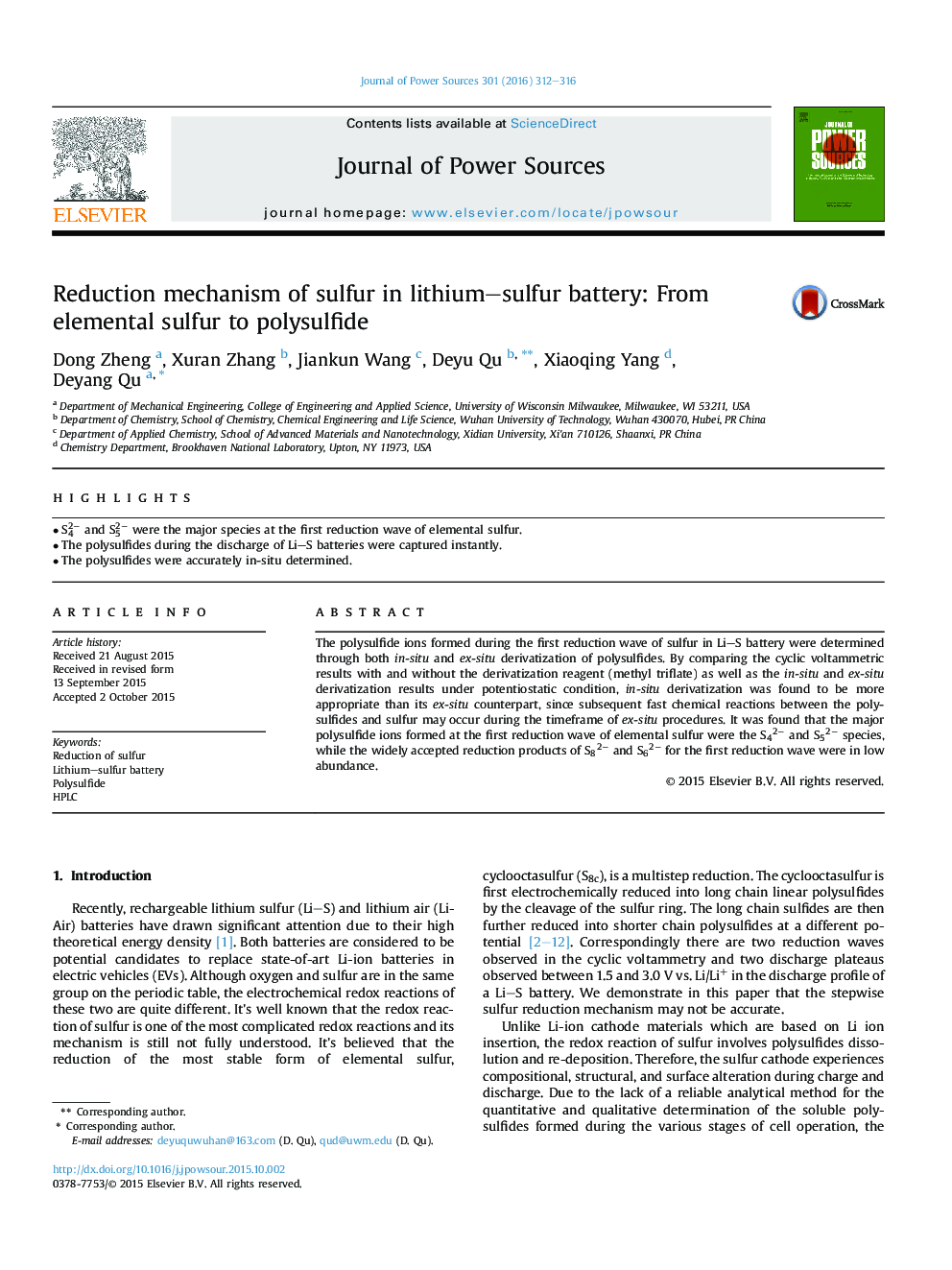| Article ID | Journal | Published Year | Pages | File Type |
|---|---|---|---|---|
| 7730049 | Journal of Power Sources | 2016 | 5 Pages |
Abstract
The polysulfide ions formed during the first reduction wave of sulfur in Li-S battery were determined through both in-situ and ex-situ derivatization of polysulfides. By comparing the cyclic voltammetric results with and without the derivatization reagent (methyl triflate) as well as the in-situ and ex-situ derivatization results under potentiostatic condition, in-situ derivatization was found to be more appropriate than its ex-situ counterpart, since subsequent fast chemical reactions between the polysulfides and sulfur may occur during the timeframe of ex-situ procedures. It was found that the major polysulfide ions formed at the first reduction wave of elemental sulfur were the S42â and S52â species, while the widely accepted reduction products of S82â and S62â for the first reduction wave were in low abundance.
Related Topics
Physical Sciences and Engineering
Chemistry
Electrochemistry
Authors
Dong Zheng, Xuran Zhang, Jiankun Wang, Deyu Qu, Xiaoqing Yang, Deyang Qu,
